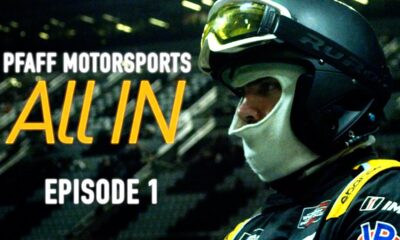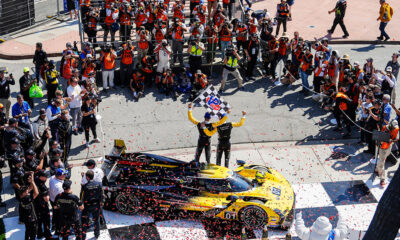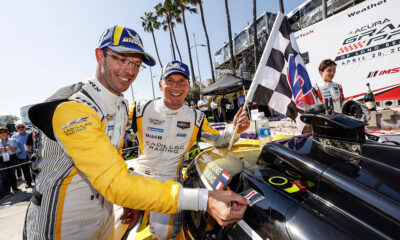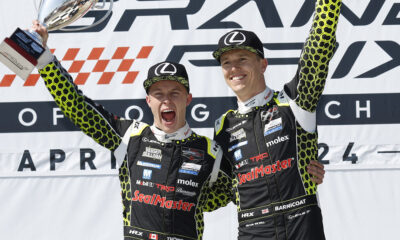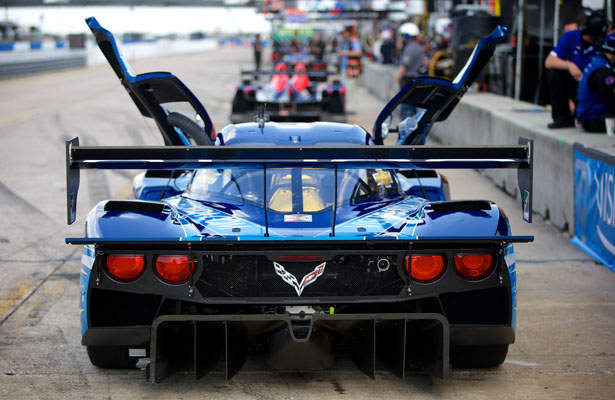
Photo: John Dagys
One of the hot topics heading into today’s second round of the TUDOR United SportsCar Championship continues to be on the series’ Balance of Performance, specifically in the Prototype class.
Six weeks ago, the DPs were the dominant force at the Rolex 24, unsurprisingly sweeping the top-four positions in the twice-around-the-clock endurance classic.
However, the tides have turned, to an extent, this weekend at Sebring, with the two platforms appearing to be much closer in lap times, thanks to a wave of adjustments handed to DP teams, along with the P2 cars moving into standard high-downforce aero trim.
While it was a Corvette DP that took pole, the Action Express Racing entry was less than two-tenths quicker than OAK Racing’s Morgan-Nissan P2 car that will line up alongside on the front row. Three DPs qualified in the top-five overall.
“I do think they’ve done a better job than I thought they would have in terms of putting it together,” WTR team owner Wayne Taylor said. “Overall, they have done a good job. But to continually [make changes], on a race by race basis, is going to wear me out. And I’m tired of being worn out.”
Taylor, as well as other team owners, have voiced concern over the recent rate of BoP changes and the expenses that it can incur.
IMSA has issued two sets of adjustments since the season-opener, as well as the high-downforce aero settings for Prototype class cars that came out last Friday, alongside the latest round of changes for the four classes.
“As a team owner my biggest complaint is timing,” said Spirit of Daytona team owner Troy Flis. “We don’t get the parts until a couple of days before the event. We don’t get bulletins until a couple of days before an event.
“We are a technical group. We have simulations, we have programs and engineers working all the time trying to get the best out of what we can get out of. For me as a car owner, that costs me a lot of money to have and I can’t utilize those people because I don’t have the right information to utilize yet.”
IMSA President and COO Scott Atherton said it has remained one of their top priorities to ensure the balance between the P2 and DP cars stays as close as possible and that there’s still some room for improvement from the sanctioning body.
“We do not want to be making adjustments after every race or in advance of every race,” he said. “But there’s a commitment to get this right. We would prefer to take the criticism of some people’s opinions that there’s too many adjustments.
“I think we rather take that criticism than feel as if we have not accomplished what we set out to achieve, which is to enable these cars to race actively with each other consistently.”
Atherton, meanwhile, has been pleased with what he’s seen this weekend, in terms of the balance achieved. Changes to the air restrictor size and boost levels were made to DP engines late last week, which also included the addition of a mandatory RPM limiter for Chevy-powered DP entries.
“I’m very pleased by just looking at the time sheets as they’ve developed so far this week,” he said. “There’s a good mix of DP and P2 content at the top of the list.
“You look at the complexity and the number of variables that are involved with matching specifically the P2 and the DP car together.
“Daytona was admittedly a very extreme example. The DPs have literally millions of miles of data they can fall back on. I think the P2 cars have a similar situation here. They’ve got a data book from years and years of racing here.”
The majority of the BoP changes have been made to DP cars, which debuts high-downforce aero settings, including a diffuser that was originally evaluated at Daytona in November, as well as a boost in horsepower.
According to Taylor, planning for the remainder of the season has become a challenge due to the evolving set of regulations. Instead, he’s proposed to not make any further adjustments and see how it plays out over the upcoming events.
“How do you plan to go to Long Beach? Tell me,” Taylor asked. “You leave here, you put the car in the truck [and take it back to the shop] and start work. But how do you start? Are they going to call the next day and say, ‘Oh, we’re going to change this and this.’
“There are going to be tracks where the LMP2 cars are going to be clearly quicker than us. Long Beach. Laguna. But there’s tracks we’re going to be quicker than them. So just leave it like that.”
Extreme Speed Motorsports director of operations Robin Hill, believes the optimal balance will be achieved over time.
“Daytona is it’s own animal, and to be honest, so is Sebring and Long Beach,” Hill said. “Once we get through those three, I think they’ll have enough data to figure out how to try and combine them so they can make it a competitive match up.
“I think different tracks are going to lend themselves to us and different tracks are going to lend themselves to the DP cars. Hopefully by the season’s end it will be 50/50 by the split.”
Flis added: “Maybe they’ll be some fine tuning and little things that will happen but I think overall, now we have some packages so we’ll be able to go work on it. We just have to keep digging.”




















